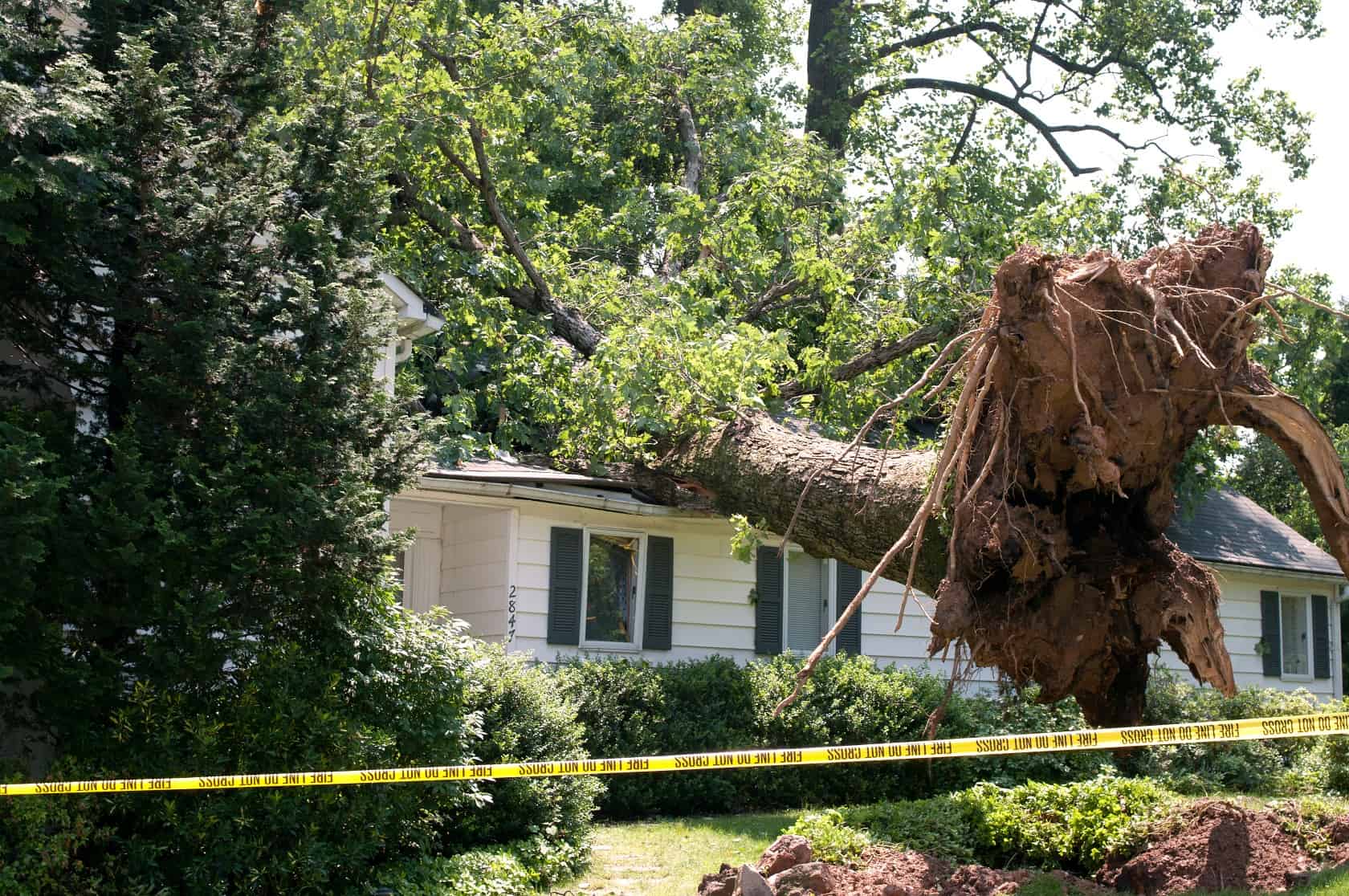When a tree falls on your property, the coverages provided by your homeowners policy can be a little confusing. Here’s a breakdown of what applies when….

Note: While the following article applies to most homeowners policies, every loss is reviewed against the policy provisions in place.
Debris Removal
So, one of your trees has fallen. Will your insurance policy cover the cost of getting rid of your fallen tree? Yes, up to $500 per loss, if:
- The tree fell due to a windstorm or hail; weight of ice, snow or sleet; and
- The tree damages a covered structure.
The covered structure included on your policy might be a fence, shed, etc. Note that the tree must damage the covered structure, not just fall on it. The $500 is for all debris removal in one loss, no matter how many trees came down due to the weather event. Keep in mind that the property deductible applies to the entire loss, which includes repairing the damaged covered structure.
What if your tree is struck by lightning? No coverage applies, since lightning is not a covered peril for tree debris removal. Or what if the tree is leaning after heavy winds, but is still standing? Because the tree didn’t fall, there’s no coverage.
Replacing the Tree
Now, what about some help replacing the tree that fell? You can get up to $500 per tree, shrub, or plant – up to a maximum of 5% of the Coverage A limit. That’s rather generous and there are additional limits, but again the property deductible does apply. There also is a separate list of qualifying perils to consider.
- Fire or lightning
- Explosion
- Riot or civil commotion
- Aircraft
- Vehicles (not owned or operated by you)
- Vandalism or malicious mischief
- Theft
Which major peril is missing? You guessed it – windstorm or hail! You might be able to collect under your policy for your tree debris removal or to replace a tree. However, you can’t collect for both in the same loss because the covered perils are mutually exclusive.
The Neighbor’s Tree
Now let’s look at debris removal of a neighbor’s tree that fell into your yard. Once again, there’s a new list of covered perils to consider. In addition to the qualifying perils already mentioned, additional perils apply here: Smoke, Falling Objects, Accidental Discharge of Water or Steam, Power Surge, and Volcanic Eruption. The tree must still damage a covered structure on your property, and the total debris removal payout is limited to $500. Your property deductible applies to the expenses for debris removal and repairing the covered structure.
There’s also the possibility that your neighbor was liable for his tree falling. If that’s the case, there’s no deductible and you have access to his liability limit. The general rule is if the neighbor knew the tree was likely to fall (it was damaged or dead), and he didn’t have it taken down, then he’s liable. This is often hard to prove unless you have record that your neighbor was informed that the tree was likely to come down.
As always, some policies may differ, so be sure to discuss specific coverages and policy details with your insurance agent.